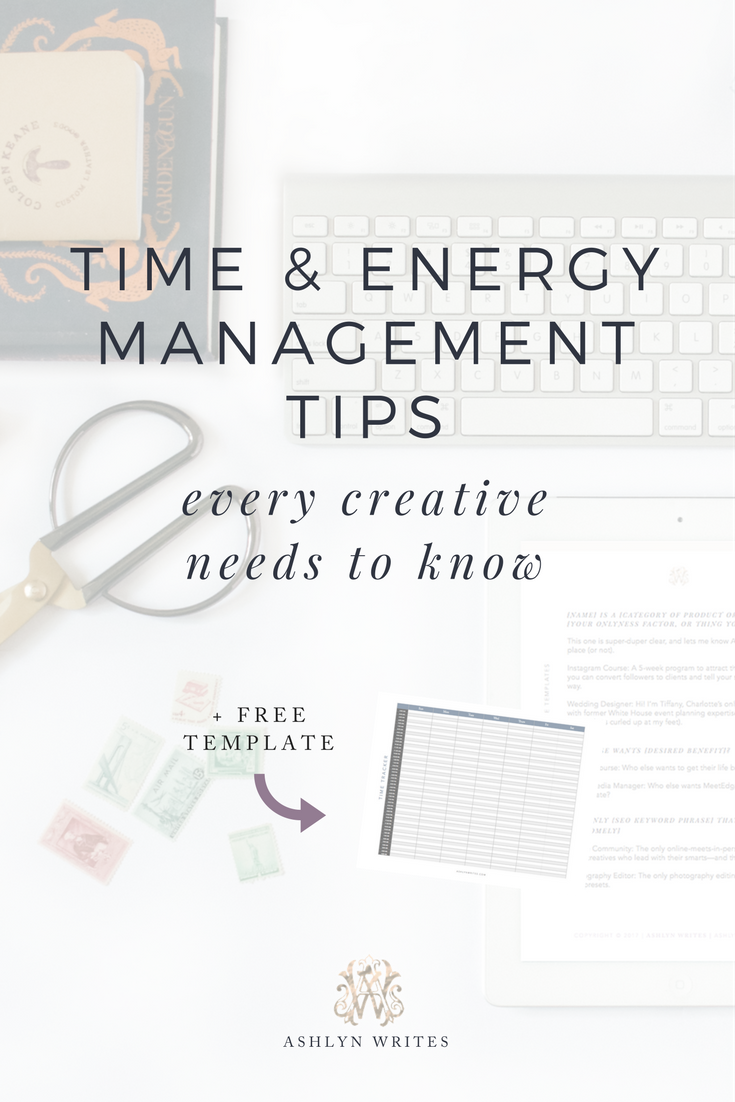This post first appeared on Natalie Franke’s blog. While she’s recovering from surgery, a few of us are chiming in to bring her tribe some content.
Getting asked to help out my powerhouse friend, mastermind sister, and sweet copywriting client (oh, AND gateway drug of choice when I first discovered the creative world) Natalie Franke with blog content while she recovers made my heart grin.
If you follow my copywriting and calligraphy business, you may have heard me state my mission.
I want to work from a place of rest—not hustle.
Not that hustle’s bad. It’s GOOD, actually … it’s really good.
But the thing is, you see, I dunno how to turn it off.
And another thing is, we’re venturing into tinsel times and holidays that (despite our suffocating-with-sales-inboxes) ought to look a bit more like quiet, carved out solitude plotting a better new year than speed-demon marketing prowess …
Right?
(p.s. I’m a copywriter—I probably shouldn’t be telling you to slow down your marketing, but I *sorta* am. Stay with me!)

“Guess I don’t really know what you’d want me to talk to your group about,” I stuttered out on Friday to two high-level, we-start-at-5-figures copywriting coaches that pick apart and mentor my own copywriting business.
I’d just finished screen sharing my 2018 copywriting business plan and projections, as well as sharing my income goals and knowledge of how many hours I could dedicate to each project on my 2017 timesheet reporting.
“Ashlyn. Let’s just start out with most creative entrepreneurs don’t map out things quite like this … most don’t have the entire next year’s sales goals planned out and look at their time like you do. That’s what we’d want you to teach on.”
I don’t know how to whistle.
I still get nervous speaking in public.
I think all wine tastes exactly the same and I have hand-eye coordination that makes my former QB husband act like he doesn’t see me throw anything just to save me some embarrassment.
But balance tracking my time for business & client work while still maintaining a wild, runaway creative brain as a copywriter, calligrapher, and entrepreneur?
Now, that I can do.
(I blame the agency life ;))
Today, I want to talk about how to manage your time and energies—while still being 100% CREATIVE as you go.
You’ll learn:
- Why your ideas in the shower aren’t random after all
- 3 ways to major on the major in your business
- Why copywriting closes sales, and is worth the time studying
- 4 tips for routines that work
Let’s do this!
Why Creatives Benefit From Real Rest
Lately, I’ve had my nose tucked in “Rest” by Alex Soojung-Kim Pang, a researcher and visiting scholar at Standford. Lets face it, he’s probably right up our neuroscience-fanatic girl Natalie’s alley. The guy regularly pens words like rMRI scans and “left inferior frontal gyrus” (which, so it turns out are NOT not-so-fantastic Tony Robbinses). 🤷♀️
ANYWAY.
If you’re a creative business owner, pick it up. It’s fabulous.
You see, as it turns out, those of us who—and I’m looking at you—score higher on creativity tests have more active regions of their resting brains.
In people like you and me, even when we’ve quit trying to solve problems, our brains still get after it, generating ideas that we’ll use later. #ShowerIdeasClub
The creative brain’s neurological organization and structure is sorted so creative people better tap into certain pockets of raw energy: we naturally flow through the creative breakthrough path, from preparation to incubation to illumination (a-ha!) onward to verification.
Blessing and a curse.

“Whether they know it or not, creative people treat incubation and illumination like skills every day. That’s why they develop and refine daily routines and practices that preserve time for mind-wandering, sharpen their sensitivity to insights, and allow them to capture moments of illumination.”
Tracking with me?
You and I, dear creative, are warriored-up idea horses. It always reminds me of when my husband and I were in a marriage counseling session. “I don’t want to be in Ashlyn’s brain—she has a new idea every HOUR,” Wes said. I stared blankly at our counselor. You think it’s just one an hour, babe?! In.my.sugar.plum.dreams.
I bet you can relate. 😉
And therein lies the problem. To steward this well, we’ve gotta learn how to manage that energy. How to harness it and pour it into client work, but then know when to back off and take advantage of restoration, which is where you and I BOTH know actual ideas happen.
Ideas aren’t manufactured goods.
Time in contemplation and deep-thinking is where we get our client-breakthroughs, artistic visions, business a-ha moments, and start-up dreams.
Let’s talk about how to get there.
Major on the Major in Your Creative Small Business
I remember when the CFO at my last corporate marketing job told me I was “unemployable.”
I sobbed into my pillow all night feeling like “you are a failure†might as well be branded ‘cross my forehead.

You see, I was a booming restaurant start-up, and I was hired for ONE job as a publicist & marketer: get more eyes on us. As palatable as the old operational systems were to company culture, classic millennial and PR-agency trained, I still operated on the concept that billable time was paramount: don’t waste a client’s time … they’re paying for it, after all!
Soooo … if that meant pushing against old processes that were slowing down my job, well, I couldn’t help but mention it. Multiple times, and clearly too many.
But here’s the thing: Fast forward a few months and I’m dusting the family room with a Tim Ferris podcast interview cranked up:
“To me, one of the biggest quagmires & complications of traditional employment is this focus on presence over performance … I’ve never been particularly inclined to employment of any type myself. I’m just not very good at it. I think that with an obsession over effectiveness and efficiency in process, I just see glaring holes everywhere, almost INEVITABLY, wherever I end up. If I’m underneath someone else, that leads them to feel like I’m chafing at authority and being a general pain in the a** … which I probably am.
“That’s frequently resulted in any parting ways with different companies: I’m better suited to running my own ship, however well or poorly I do that.â€
– Tim Ferris
I grinned.
It’s okay to major on the major if the major is what moves the ball forward.
Which thus means this: We don’t HAVE to be all things to all people.
[bctt tweet=”We don’t HAVE to be all things to all people.” username=”via AshlynSCarter”]
How can you major on the major? These are my top 3 picks.
- Build sustainable marketing habits like copywriting. I teach all my students inside Copywriting for Creatives and say it in every talk: copywriting is your closing pitcher. Images are great, they lead, and they’re necessary. 90-93% of information is communicated visually. But it’s the other percentile that CLOSES the sale. Do your business a favor and build for the long game. Learn how to create more than a beautiful Instagram grid. Learn how to write copy that closes sales. Find out how to get started in this 5-minute read. >
- Create a financial plan that meets your needs—then rest. For my business and family, that’s mean working 1:1 with Shanna Skidmore through her Blueprint Model program. Find a business coach who can help you map out what “enough†looks like for you in the next 5 or 10 years … make a plan to get there … and then rest. Learn more about the finances system for creatives here. >
- Niche down. My students know I call this your Onlyness Factor (you can learn more about it here), but basically, be able to tell me why you do what you do the way you do it better or different than anyone else. Now THAT will take some of the 24/7 hustle down a bit. Promise.
Do those all seem too much right now? Just pick one.
Seriously, just pick one, and over time—from now until the end of the year—see if you can pepper in the other two.
Create flows & develop sustainable routines to manage your creativity
It’s funny how often the word “productivity” trends in creative circles, isn’t it?
The thing is, productivity hacks and tips and tricks (and tirade) only actually work if you’re filling the time gained with your zone of genius.
And honestly … most productivity things teach you how to do MORE time-waster work with the time you get back.
I want to argue the inverse.
Maybe you need to do LESS with that time.
Maybe you need to use that time for annual sabbaticals and walks around the block at 2 p.m. when your inbox is whirring.
Maybe you need to use that time for a 12 p.m. workout class or a weekend sleeping in and reading.
Maybe in the time you get back you can add 3 hours of education on Fridays where you just sit and listen to courses and let your brain explode with new ideas.
Here are a few ideas to get you started:
- Day batch like crazy: I hold Marketing Monday, Client-work Tuesdays, Product Development Wednesday, Calls on Thursdays, Finance (& Systems) Fridays. Click here to read more about how I do that.
- Start sleeping. I’m still pretty terrible at this, but read Arianna Huffington’s “Sleep Revolution“. It’s a kick in the pants!
- Hack the first 4 hours of your workday. Be a maker in the morning, and a manager in the afternoon. Drill down those first 4 hours to zone in on your biggest, hardest task, or your craft (so writing copy or doing calligraphy work for me, whatever it is for you. Stephen King spent 4 hours a day writing before calling it quits and Jerry Seinfeld wrote jokes for four hours a day).
- Track your time to see where it goes. As it turns out, you may not be working as much as you think. 😉 Download my free time tracker here, and put Laura Vanderkam’s books on your reading list.
We’re dripping into frost-filled days of hushed winter, so how are you making moves to quiet the hustle so you can work from a place of rest?
Clearly as creatives we need the rest.
Natalie’s probably got a few books from college that argue that.
But what baby steps can you take today to order your goals and plans so you’re marketing a business sustainably in 2018?
Comment below—I’d love to hear them!
Need a boost with a few tools to slow your marketing hustle? This week, take 40% off The Ashlyn Writes Shop—from copywriting templates to goal-setting guides, I’m here to help you build a business that works for you and gives you time for white space and margin.
Leave a Reply Cancel reply
© 2023 Natalie Franke
/
/
/
/
/


Natalie, great post! It’s true that niching down seems like a daunting task at first, but it brings so many benefits. One thing many don’t realize is the fact that you’ll start attracting the right clients instead of a broad range of them who are looking for things you can’t offer them.